Facts about 'murder hornets'
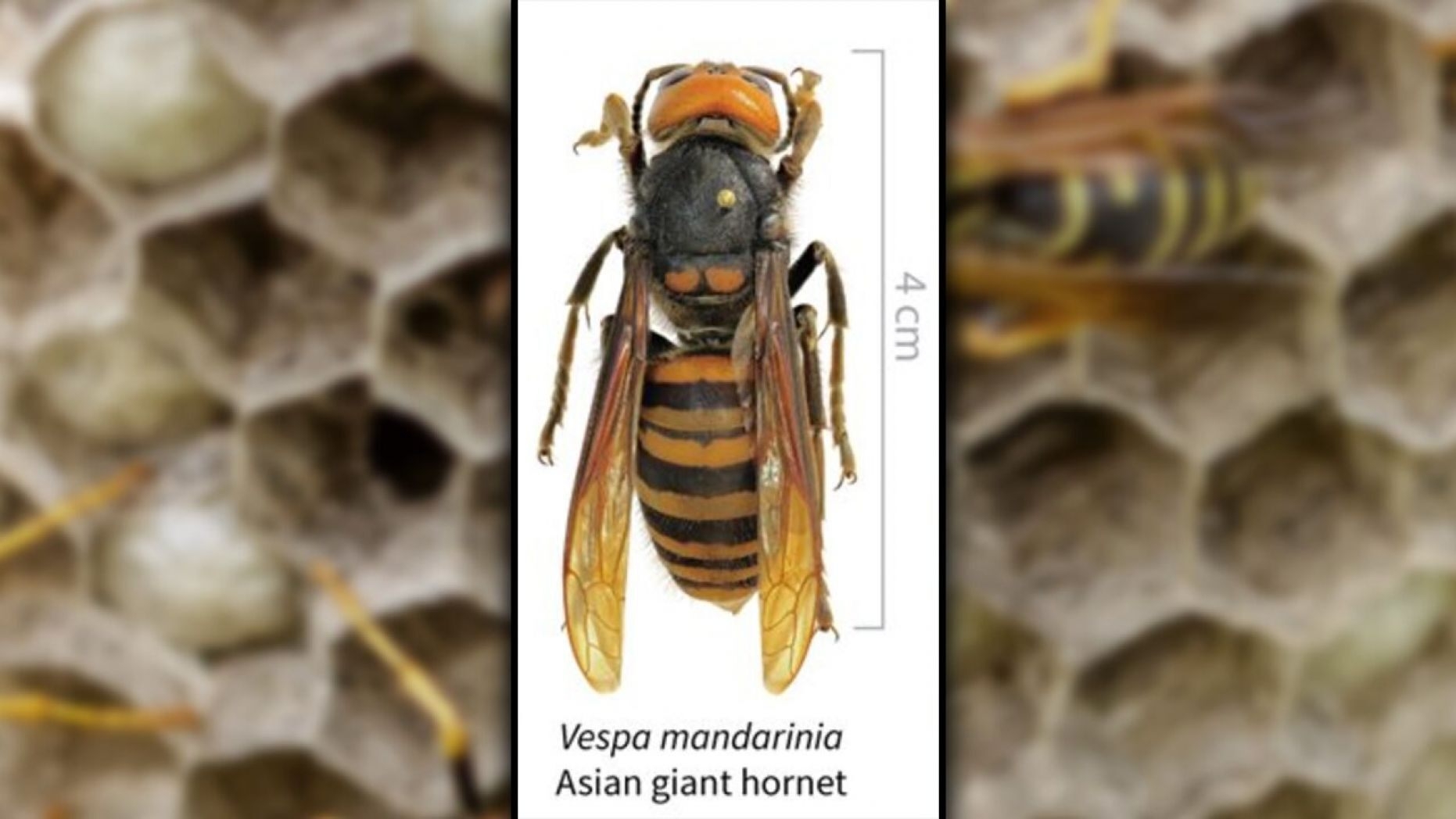 |
| The invasive Asian giant hornet has been sited in Washington state for the first time in the U.S. (Washington State Department of Agriculture) |
Like a B movie from the 1970’s, the media overseas has been full of headlines around giant killer asian hornets making their way across Asia, Europe and United States now. The shocking factor behind these stinging insects is how painful and life threatening their stings can be. But did you know hornets are so much more than ultimate killing machines?
Trying to get rid of hornets or other stinging pests on your own can be risky. Done improperly, you can end up stung by the hornets or wasps you are trying to get rid of. Ehrlich Pest Control specialists know where to find the nests for the hornets and stinging pests. Ehrlich's specialists will also make sure to get rid of the hornet's nest at the right time of day and using the right treatment options to completely remove the nest.
Murder Hornets danger to person is low
It’s a fittingly upsetting nickname, based on a lengthy March presentation from Washington State Department of Agriculture entomologist Chris Looney.
It opened with a slide listing other ominous titles for the the largest hornet in the world: “yak killer hornet” and “giant sparrow bee” among them.
This spring, the Washington state Department of Agriculture started hunting for Asian giant hornets after two confirmed sightings of the predator.
And while officials are concerned, especially for local honeybee populations, the danger to the average person is low at this time Looney, confirmed to USA TODAY Saturday.
The hornets are “probably not going to murder someone … don’t panic,” Looney said.
Looney described a lifecycle where Asian giant hornets attack individual honeybees in the early summer – turning prey into a “meatball” to feed to hornet larvae. Soon, the hornets abandon this “hunting phase” in favor of the “slaughter phase” – the wholesale killing of bee colonies so the hornets can plunder their hives.
Efforts to contain the spread of the hornets, which prey on virtually any insect in addition to honeybees, have been ramping up in recent weeks, Looney said Saturday.
 | 10 must-know facts about Kawasaki Disease Fifteen kids in New York City (U.S) have been hospitalized with symptoms consistent with Kawasaki disease, a rare condition that causes swelling in the arteries. Experts ... |
Murder Hornets are a delicacy in Japan
Although hornets are responsible for a percentage of hospital visits in Japan, that doesn’t stop them from snacking on these predatory stinging insects. In many Japanese mountain villages, hornets are considered a delicacy, especially hornet larvae. Often eaten either deep fried or raw, hornets provide a huge amount of protein.
Energy Drink
Hornet larvae produce a sticky, sweet segregation known as vespa amino acid mixtures (VAAM) which attracts the workers and gives them energy. VAAM is also used in a popular Japanese energy drink.
If red bull gives you wings, what would a hornet energy drink give you?
| Scientists say the Asian giant hornet's life cycle begins in April. Researchers told WSU that is when the queen wakes up from hibernation and scouts out spots to build underground nests and grow colonies. Todd Murray, WSU Extension entomologist and invasive species specialist, told WSU Insider the "shockingly large hornet" is a "health hazard, and more importantly, a significant predator of honey bees." But murder hornets become most dangerous from late summer to early fall, when they ravage through honey bee populations. WSU researchers said the hornets attack the bee hives, decapitating and killing the adults and eating the larvae and pupae. Just a few of the hornets can completely destroy a hive in a matter of hours. |
Murder Hornet stings: hornet venom can be deadly
The one underlying factor which makes hornets so dangerous is their sting. Although, the likelihood of getting stung by a hornet is very small, when they do decide to attack, it can be fatal.
The main reason a hornet’s sting is so deadly compared to other stinging insects is due to the sheer size of a hornet. Generally, hornet venom isn’t considered that toxic to humans, but due to their size, the amount of venom they release per sting can be harmful. Hornets release more venom per sting than any other stinging insect.
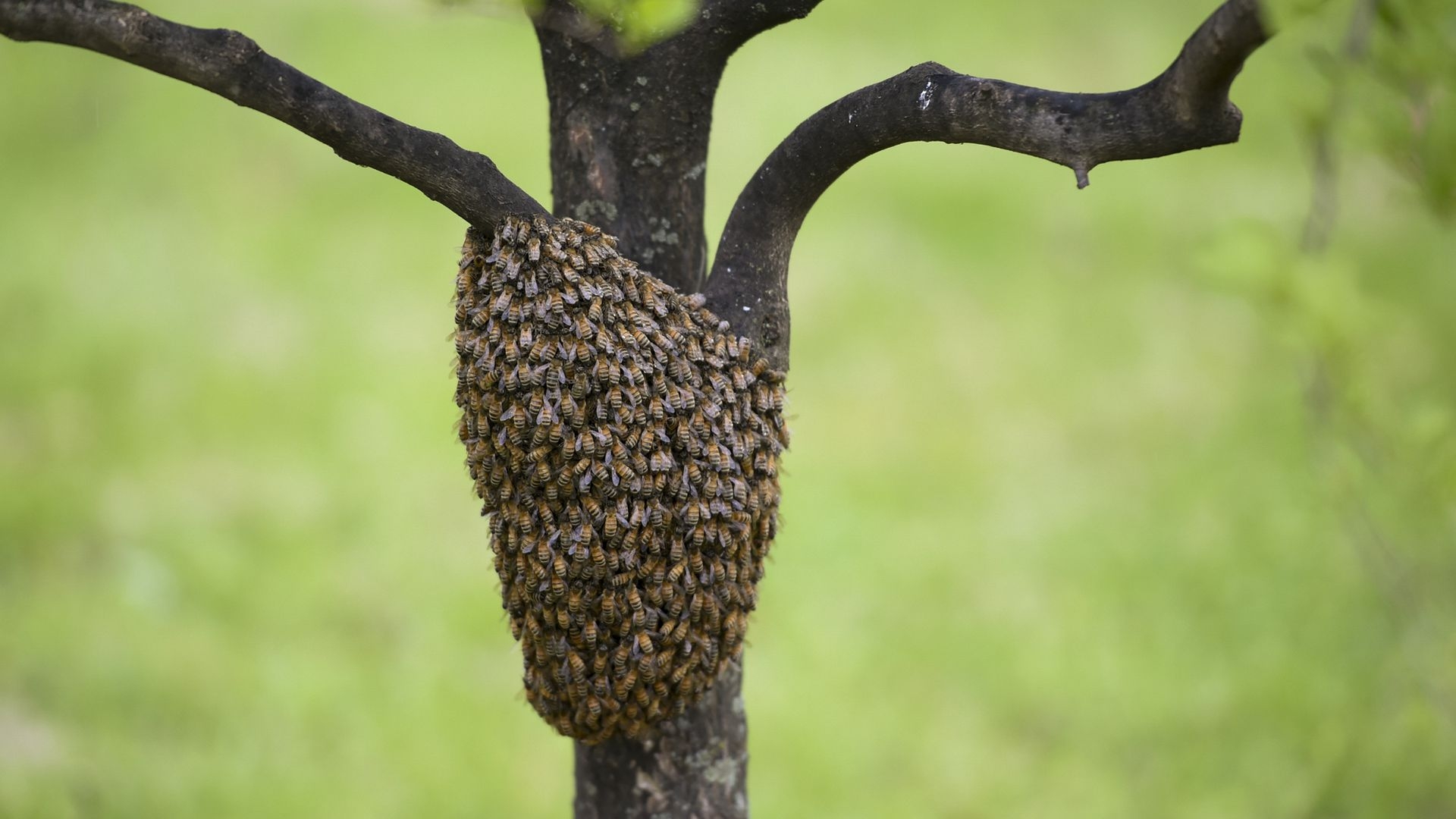 |
| A swarm of bees in West Reading, Penns. on April 21. Scientists are concerend that Asian giant hornets could "decimate" U.S. bee populations. Photo: Lauren A. Little/MediaNews Group/Reading Eagle via Getty Images |
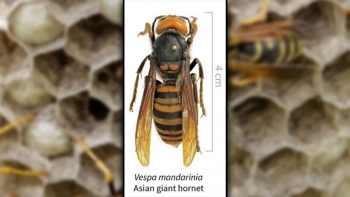 | 13 must-know facts about ‘murder hornets’ The so-called "murder hornets" has been making global headlines after The New York Times detailed an invasion of Asian giant hornets in Washington State. The Washington ... |
Giant Asian Hornets
These giant stinging insects are loving the spotlight at the moment. Originating in Japan, the giant Asian hornet has quickly made its way across Europe.
With a long stinger, and a venom that contains powerful chemicals that can cause havoc to human tissue and nervous systems, these peaceful creatures shouldn’t be messed with.
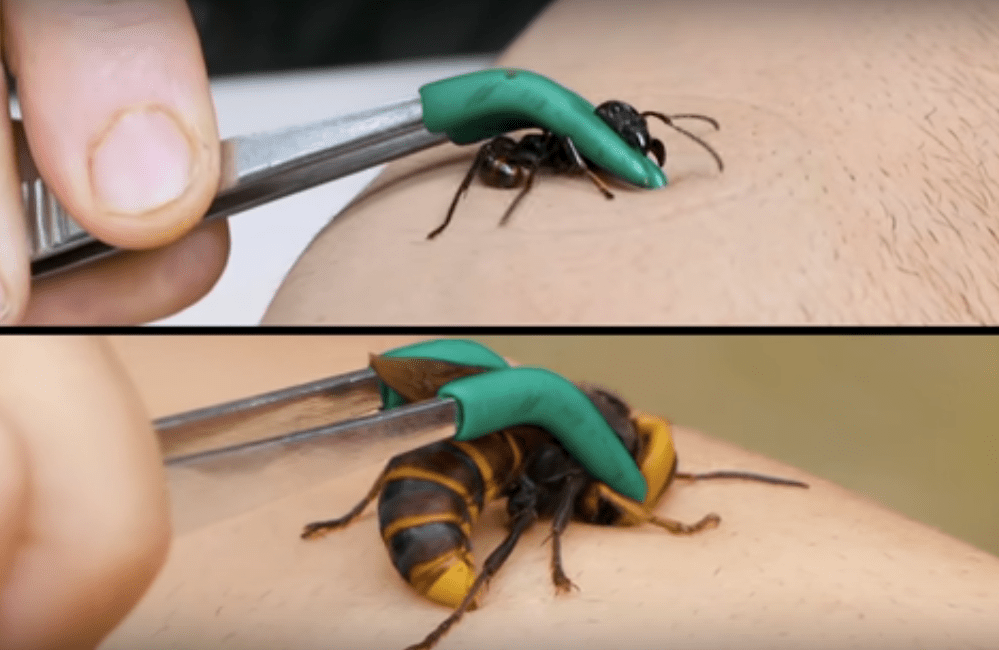 |
| An invasive hornet species slaughters honeybees, can be deadly to humans and –unfortunately – has been spotted in the United States |
Murder Hornets love bees!
Bees are one of a hornet’s favorite things. Not only are they a great source of protein for their future queens, but they provide a sweet, golden, sugar goodness which hornet’s love – honey!
Nearly 5 times the size of a European honey bee, it only takes a small number of giant hornets to wipe out an entire honey bee colony. Their sheer size and power means that one giant hornet can kill roughly 40 bees a minute.
Hornets are usually gentle giants, but they can also be dangerous. In particular they can be dangerous for bees.
However, Japanese honey bees have developed a cunning tactic to stop these predators from wiping out their colony. As a hornet scout approaches the hive, the honey bees attack her before she can release any pheromones to attract her team mates. A honey bee’s sting and bite is no match for a hornet, so instead they swarm around the lonesome hornet, vibrating their bodies at a tremendous rate. The vibration from the bees causes the temperature to drastically rise, roasting the hornet alive.
This technique is the result of evolution over hundreds of years. Honey bees from the rest of the world have yet to discover this defense mechanism, making them prime targets to giant hornets as they make their way across the globe.
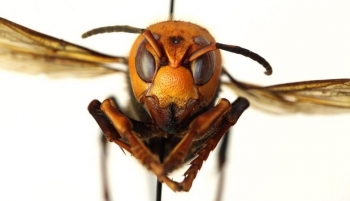 | 'Murder hornets' - danger to the average person is low The murder hornets made their way to the U.S. for the first time.The hornets are “probably not going to murder someone … don’t panic”, USA Today ... |
Natural pest controllers
Hornets are one of mother nature’s pest controllers. With a craving for insects such as aphids, hornets help rid the world of unwanted garden pests which damage resources within an agricultural setting.
What do Hornets eat?
Hornets are known to have a rich diet of sugar and protein among other things.
- Sugar – Like other types of wasps, hornets have a real sweet tooth and crave sugary things such as fruit and fizzy drinks.
- Sap – Hornets love tree sap! You can often find them using their mandibles to pull back the bark from trees to get to the sticky golden substance.
- Protein – Just like other insects within the Vespidae family, their young live off protein which the workers forage for in the form of insects and other animals. In return, the larvae releases a sweet syrup which the adults lap up.
Gentle giants
A little known fact about hornets as they are actually not as aggressive as one might think.
Not aggressive
Like most nest building insects, hornets will usually only attack to defend their colony when they feel it is being threatened. This is mainly only when someone or something comes within close proximity of the nest (the radius of this is usually 2-3m) .
Outside of their nest area hornets have been known to be quite passive creatures. It has been noted by some researchers that hornets are shy, peaceful creatures. They tend to avoid conflict and only attack when they absolutely have to.
Wasp vs hornet: hornets are actually wasps
Did you know hornets are actually a subset of wasps. In particular, hornets are a breed of social wasps, living in large, highly organized, colonies.
Hornets belong to the insect family Vespidae. This family contains each species of hornets as well as wasps such as yellow jackets, paper wasps, potter wasps and pollen wasps.
Fun Fact – Bald faced hornets are actually wasps, and do not belong to the hornet family.
The main difference between wasps and hornets is their size. Hornets are relatively larger than wasps, which is one of the main reasons they are so scary, although as previously discussed, they are quite shy. Another difference is the color. Wasps which are usually yellow and black, hornets fare more orangey-red, although this does vary with each species.
Hornets nest below ground
So where do hornets create nests? That depends on the species.
Typically, hornets like to build their nests in high areas. These include, but are not limited to:
- Attics
- Treetops
- Under roofs
- Decking
- Sheds
- Garages
- Hollow tree trunks
- Areas that are raised off the ground.
Hornet nests which are elevated are sometimes free-hanging, using a stalk called a petiole which attaches to the nearest object such as a tree branch.
Hornets nest in the ground
Asides from high places, hornets are also known to build their nests in enclosed spaces that provide support and security. Sometimes this can be old, abandoned rodent burrows.
Located within fields, gardens and parks, hornets that build their nests in the ground cause a real risk to humans. Hornet’s nests built in the ground in areas highly populated by humans runs the risk of getting stepped on by accident, causing the hornets to attack the unsuspecting human.
| Asian murder Hornet sightings can be reported to the Washington State Department of Agriculture Pest Program at 1-800-443-6684, [email protected] or online at agr.wa.gov/hornets. |
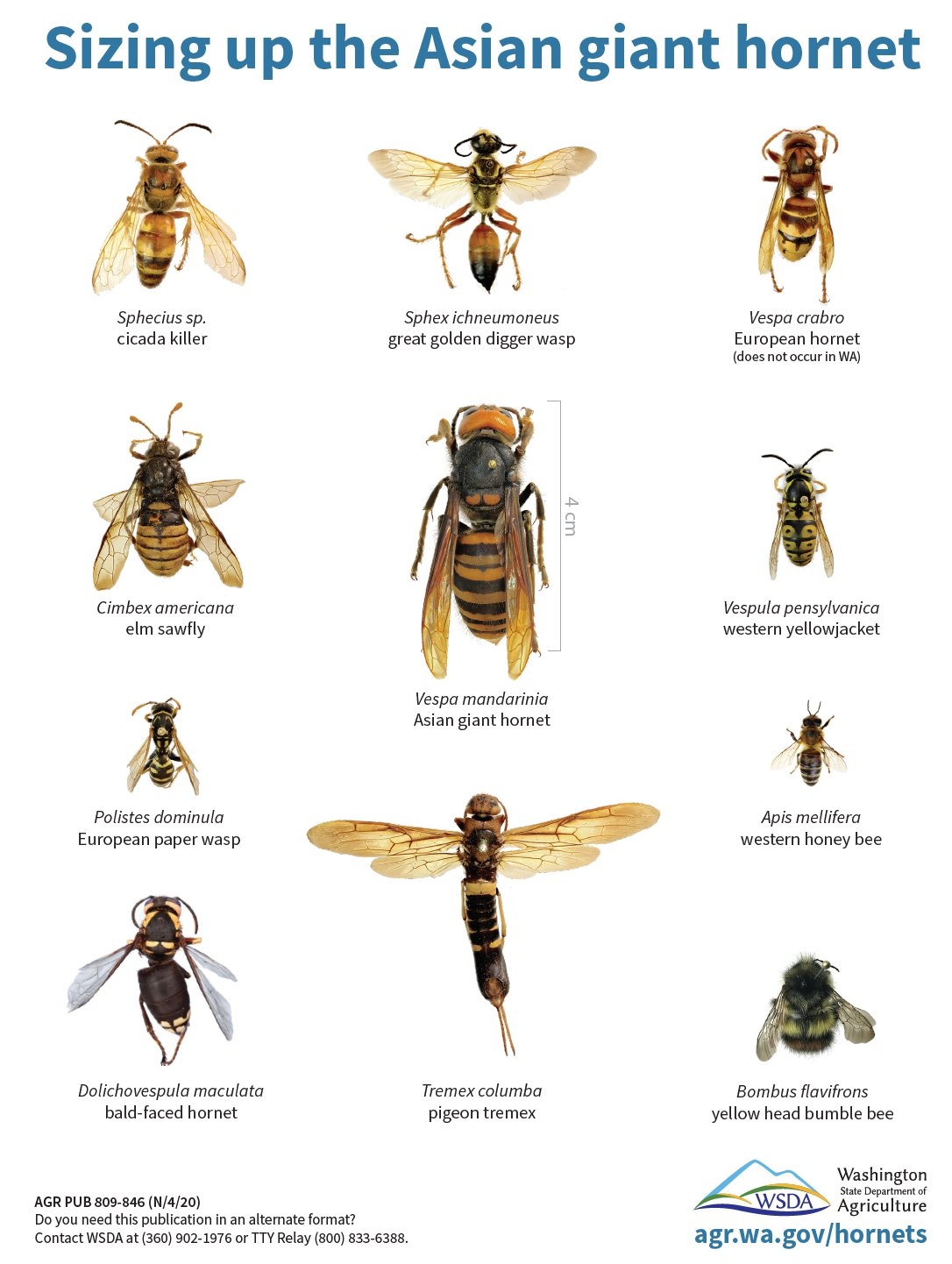 |
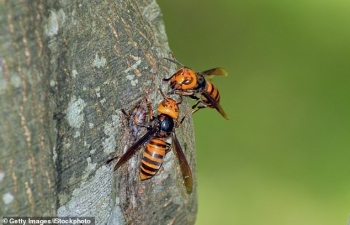 | What are ‘murder hornets’? Asian hornets, known as ‘murder hornets’, the New York Times recently reported, have been spotted in the United States and Canada for the first time, ... |
Recommended
 World
World
India-EU trade agreement expected to be promoted in the future
 World
World
German Chancellor Merz begins his first state visit to India
 World
World
Vietnamese Lunar New Year Food Fair 2026 Showcases Cultural Identity in Malaysia
 World
World
India named President of BRICS+ for the 2026 term
Popular article
 World
World
India strengthens defense and security ties with Central Asia
 World
World
India–Brazil–South Africa (IBSA) Dialogue Forum: An Assessment – Analysis
 World
World
India’s package for exporters signals confidence in Southeast Asia markets
 World
World






